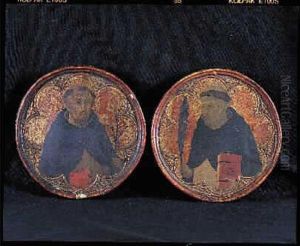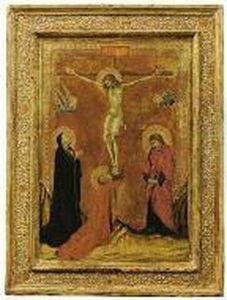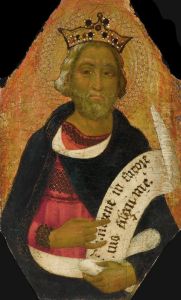Bartolomeo Messer Di Bulgarini Paintings
Bartolomeo di Maestro Bulgarini, also simply known as Bartolomeo Bulgarini, was an Italian painter of the Sienese School during the 14th century, a period rich in artistic innovation and deeply influenced by religious and civic devotion. Bulgarini's exact birth date within the 1300s remains uncertain, reflecting the broader challenges in pinpointing details of artists from this era due to scarce documentation. He passed away in 1378, having spent most of his life in Siena, a city renowned for its vibrant artistic community and rivalry with the Florentine school.
Bulgarini's work is emblematic of the Sienese tradition, characterized by its emphasis on elegant linearity, rich coloration, and devout religious themes. He was deeply influenced by the works of Simone Martini and the Lorenzetti brothers, who were pivotal figures in the Sienese School, known for their graceful Gothic style and emotional expressiveness. Though not as widely recognized as his contemporaries, Bulgarini's contributions to the Sienese artistic landscape were significant, with his paintings reflecting both the stylistic traits of his predecessors and his unique interpretations.
The documentation of Bulgarini's life and works is sparse, with historical records primarily consisting of contractual agreements for commissions, which were common practice at the time. These documents reveal that Bulgarini was actively working on various religious commissions throughout Siena and its surrounding areas, including altarpieces, frescoes, and manuscripts illuminations. His works are noted for their devotional intensity, intricate detail, and the use of gold leaf, which adds a divine quality to his representations of biblical scenes and saints.
One of Bulgarini's most notable surviving works is the polyptych in the church of San Pietro in Villore, near Siena, which showcases his mastery of form and color, as well as his ability to convey deep religious sentiment. Despite the lack of a vast corpus of attributed works, those that are confirmed to be by his hand contribute valuable insights into the evolution of Sienese painting and the broader Gothic style prevalent in Italy during the 14th century.
Bulgarini's legacy, while overshadowed by the more famous names of the Italian Renaissance that followed, remains an important chapter in the history of the Sienese School. His devotion to religious themes, combined with a distinctive stylistic elegance, exemplifies the spiritual and artistic aspirations of his time. Today, his works are preserved in various museums and churches, serving as testaments to the enduring beauty and depth of medieval Italian art.


